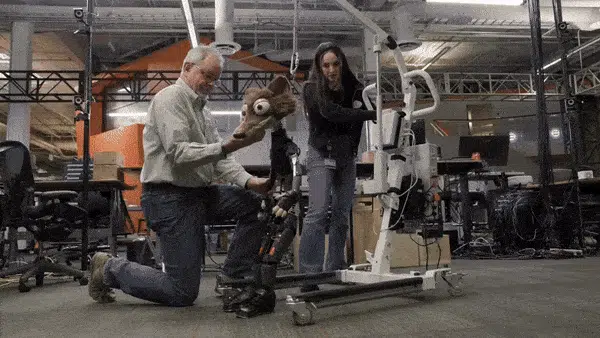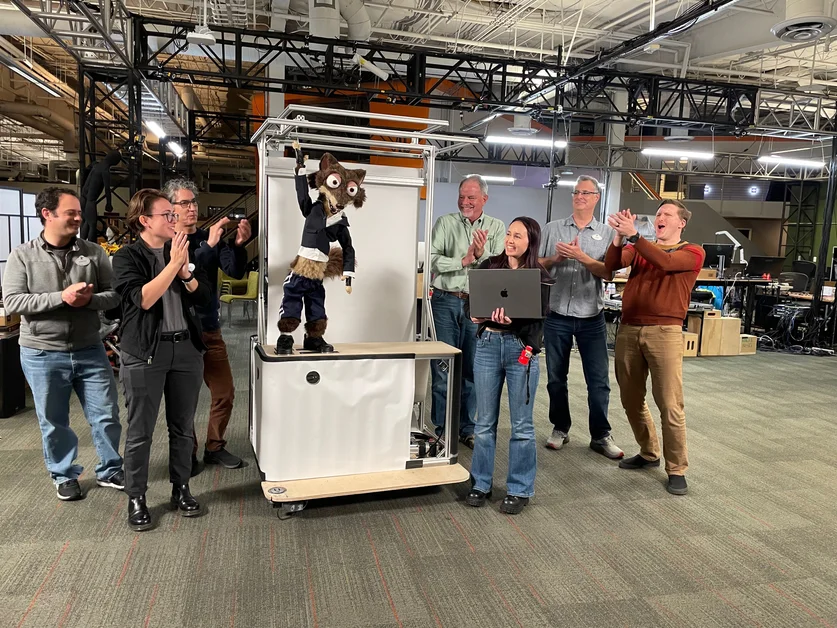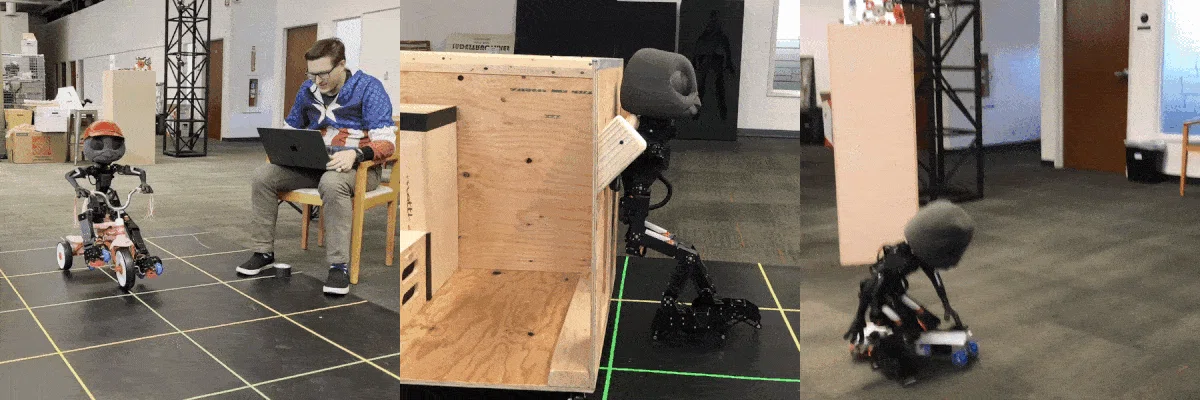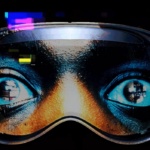Disney’s legacy in storytelling highlights a crucial lesson: the invaluable role of the sidekick. While not the main attraction, sidekicks infuse stories with vitality and forward momentum, essential for progression. Imagine the void in “Aladdin” without Genie or “Peter Pan” sans Tinker Bell.

In the realm of robotics, it’s a different narrative. Robots typically operate solo or in parallel but seldom in collaboration. This is largely due to design choices that prioritize strength and repeatability over adaptability, making robot-to-robot collaboration a challenge due to their rigidity and the inevitable discrepancies in interaction.
Yet, the integration of teamwork among robots, particularly those with differing abilities, presents untapped potential, notably in the field of entertainment robotics. At Walt Disney Imagineering, our explorations into robot collaborations have borne fruit, as demonstrated recently in Shanghai with the debut of a unique character in the newly opened Zootopia land.
During this showcase, the robotic character Duke Weaselton made a memorable entrance at Shanghai Disney Resort, engaging the audience with his antics alongside a purple kiosk, set against a backdrop of lively pop tunes. This performance, highlighted in the subsequent video, not only entertained but also subtly introduced the concept of robot collaboration to the audience.
This spectacle was the product of not one, but two robots: Duke Weaselton and his kiosk. Despite their differences, their synergy allowed for a performance that neither could achieve independently. Duke, an animated, bipedal robot, paired with the kiosk’s predictable, wheeled base, delivered a blend of excitement and reliability, showcasing the power of collaborative robotics.
“The collaboration between the two robots is enabled by designing them to be robust and flexible, and with motions that can tolerate a large amount of uncertainty while still delivering a compelling show. This is a direct result from lessons learned from an earlier robot, one that tumbled across the stage at SXSW earlier this year. Our basic insight is that a small, lightweight robot can be surprisingly tough, and that this toughness enables new levels of creative freedom in the design and execution of a show.”
This innovation stems from our understanding that resilience and adaptability facilitate smoother interactions among robots, allowing for performances that are not only technically impressive but also emotionally resonant.

Disney Imagineering
To bring Duke to life, our team leveraged an animation pipeline developed for a previous SXSW demonstration, enabling designers to pose the robot for new motions manually. This system, enhanced to incorporate motions from standard animation software, ensures tight synchronization between Duke and his kiosk, allowing for individually tailored animations that still operate in harmony.
In the lead-up to this demonstration, our team experimented with various modes of collaborative locomotion, including tricycle riding, skateboarding, and crate pushing, each designed to augment the character’s movement through robotic assistance.
“Disney hopes that their Judy Hopps robot will soon be able to use the help of a robotic tricycle, crate, or skateboard to enable new forms of locomotion.”
The introduction of Duke Weaselton and his kiosk marks just the beginning of our journey toward interactive robotic characters. As Tony Dohi, Principal R&D Imagineer, explains, this venture is a stepping stone towards a grander vision of emotionally engaging robot interactions.
Walt Disney Imagineering R&D‘s strategy encompasses the rapid prototyping of engaging character experiences and the parallel development of new technologies to enhance and innovate future performances. This approach is exemplified by a recent presentation at IROS, showcasing a new dimension of robotic expression and movement.
“Authentic character demonstrations are useful because they help inform what tools are the most valuable for us to develop,” says Moritz Bächer, leading the robotics team. This philosophy underscores the importance of collaboration, not just among robots, but as a foundational principle in the creation and delivery of captivating robotic shows.








